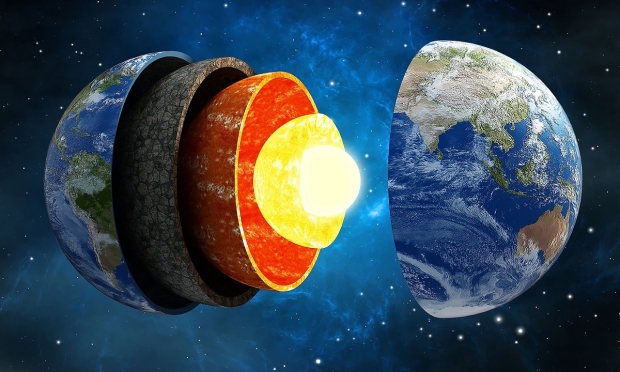Researchers from The Australian National University have penned a new study that has been published in Nature Communications and details the discovery of a new core inside of Earth's inner core.

The team of seismologists measured how seismic waves pass through each of Earth's most distinctive layers; the crust, the mantle, the outer core, and the inner core. The researchers found that seismic waves passed through each of the four layers at different speeds. However, the team claims they identified a distinctive fifth layer within Earth's inner core when they measured how seismic waves travel through Earth's center.
These seismic waves begin at the location of an earthquake, travel through Earth's core, and are then spat out on the opposite side of the planet from where the earthquake happened. The waves then make travel back to the source of the earthquake. This bouncing phenomenon is called the antipode, and typically, seismologists are only able to measure one antipodal bounce.
"The existence of an internal metallic ball within the inner core, the innermost inner core, was hypothesized about 20 years ago. We now provide another line of evidence to prove the hypothesis," said Dr. Thanh-Son Phạm, from the ANU Research School of Earth Sciences
The recently published Nature Communications study states the team observed for the first time seismic waves that bounced back and forth up to five times along Earth's diameter. With this newly acquired data, researchers looked at how the seismic waves were reacting to Earth's inner core, that's made up of an iron-nickel alloy.
Specifically, the team looked at how the seismic waves are sped up or slowed down while passing through the inner core material and found that bouncing seismic waves had variations in speed depending on the angle or direction they were going while passing through. This finding led researchers to believe that Earth's inner core contains an inner core that is comprised of a different material than its outer layer. This differentiation could explain why seismic waves speed up or slow down depending on their entry angle to Earth's core.
"This inner core is like a time capsule of Earth's evolutionary history - it's a fossilized record that serves as a gateway into the events of our planet's past. Events that happened on Earth hundreds of millions to billions of years ago," said Dr. Thanh-Son Phạm.
So, where did this innermost core come from? The team of researchers suggests that Earth experienced a "significant" global event, such as a tectonic shift caused by an asteroid impact that resulted in the creation of this innermost metallic ball.
The research conducted on Earth's core is a vital piece of the puzzle of how life came to be on Earth. The metals within Earth's core provide the planet with a magnetic field that protects it from harmful ejections of charged particles hurdled by the Sun. Therefore, Earth's inner core has been one of the foundational factors in creating a viable environment for life to evolve.
"There are still many unanswered questions about the Earth's innermost inner core, which could hold the secrets to piecing together the mystery of our planet's formation," Professor Tkalcic said.



